In the system shown in figure m1>m2. System is held at rest by thread BP. Just after the thread BP is burnt :

Magnitude of acceleration of both blocks will be equal to (m1−m2m1+2m2)g
Acceleration of m1 will be equal to zero
Acceleration of m2 will be upwards
Magnitudes of acceleration of two blocks will be non-zero and unequal
The correct Answer is:b,c
Step by step video, text & image solution for In the system shown in figure m_(1) gt m_(2). System is held at rest by thread BP. Just after the thread BP is burnt : by Physics experts to help you in doubts & scoring excellent marks in Class 11 exams.
Topper's Solved these Questions
- BOOK - ANURAG MISHRACHAPTER - FORCE ANALYSISEXERCISE - Level-349videos
FORCE ANALYSIS
- BOOK - ANURAG MISHRACHAPTER - FORCE ANALYSISEXERCISE - Matching type13videos
FORCE ANALYSIS
- BOOK - ANURAG MISHRACHAPTER - FORCE ANALYSISEXERCISE - level 1103videos
FORCE ANALYSIS
- BOOK - ANURAG MISHRACHAPTER - DESCRIPTION OF MOTIONEXERCISE - Level-334videos
DESCRIPTION OF MOTION
- BOOK - ANURAG MISHRACHAPTER - IMPULSE AND MOMENTUMEXERCISE - matching3videos
IMPULSE AND MOMENTUM
Similar Questions
Masses m1,m2,m3 and m4 are arranged in a system as shown in fig where m1+m2>m3+m4 The lower string keeping the system in equilibrium is burnt The masses start moving. Find the acceleration of masses if the threads are weightless and inextensible the springs are also weightless and the mass of the pulley is negligible.
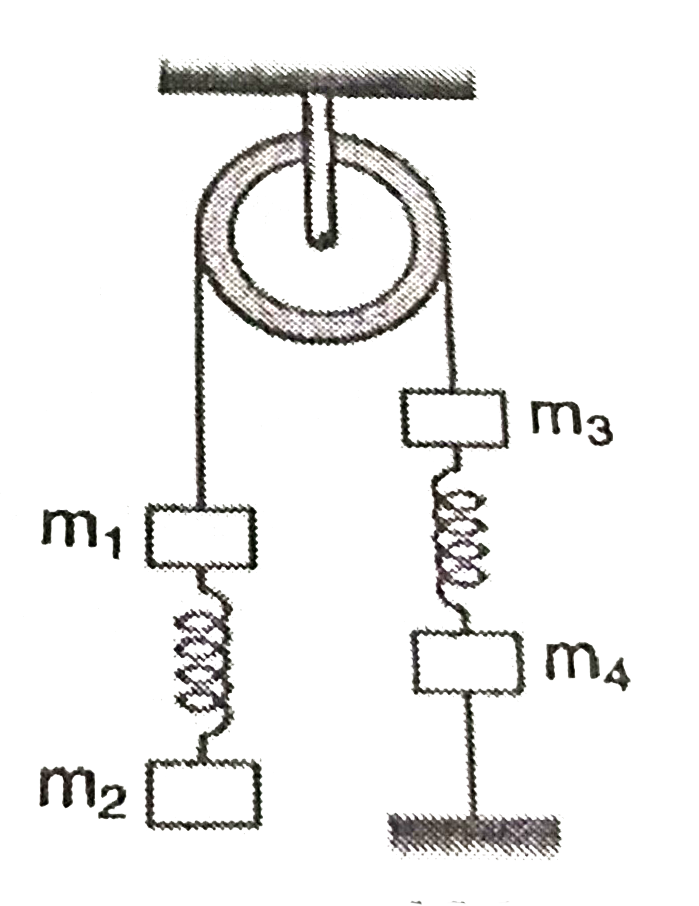 View Solution
View SolutionFind the mass m in the figure for the system to be at rest
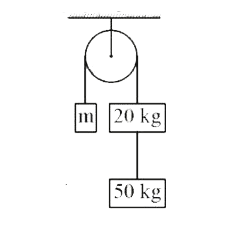 View Solution
View Solution
Knowledge Check
- Question 1 - Select One
In the system shown in figure m1>m2. System is held at rest by thread BC. Just after the thread BC is burnt.
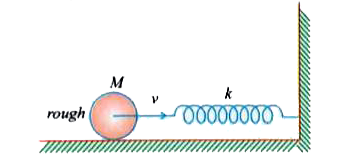 Aacceleration of m1 will be equal to zeroBacceleration of m2 will be downwardsCmagnitude of acceleration of two blocks will be non-zero and unequalDmagnitude of acceleration of both the blocks will be (m1−m2m1+m2)g
Aacceleration of m1 will be equal to zeroBacceleration of m2 will be downwardsCmagnitude of acceleration of two blocks will be non-zero and unequalDmagnitude of acceleration of both the blocks will be (m1−m2m1+m2)g - Question 2 - Select One
In the system shown in the figure m1>m2. System is held at rest by thread BC. Just after the thread BC is burnt :
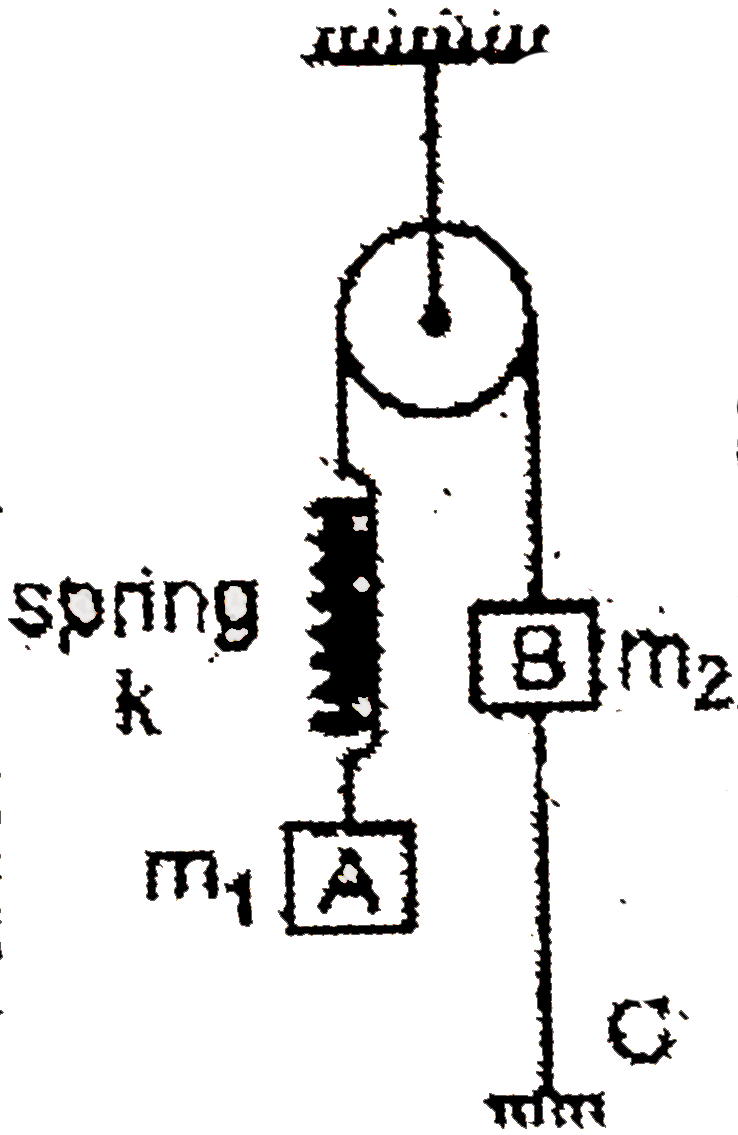 Ainitial acceleration of m2 will be upwardsBmagnitude of initial acceleration of both blocks will be equal to (m1−m2m1+m2)gCinitial acceleration of m1 will be equal to zeroDmagnitude of initial acceleration of two blocks will be non-zero and unequal.
Ainitial acceleration of m2 will be upwardsBmagnitude of initial acceleration of both blocks will be equal to (m1−m2m1+m2)gCinitial acceleration of m1 will be equal to zeroDmagnitude of initial acceleration of two blocks will be non-zero and unequal. - Question 3 - Select One or More

In the system in the figure m1>m2 system is held at rest by thread BC. Just after the thread BC is burnt:Aacceleration of m2 will be upwardsBmagnitude of acceleration of both blocks will be equal to (m1+m2m1+m2)gCacceleration of m1 will be equal to zeroDmagnitude of acceleration of two blocks will be non-zro and unequal.
In the system shown in fig. m1>m2 . The system is held at rest by thread BC. Now thread BC is burnt. Answer the following:
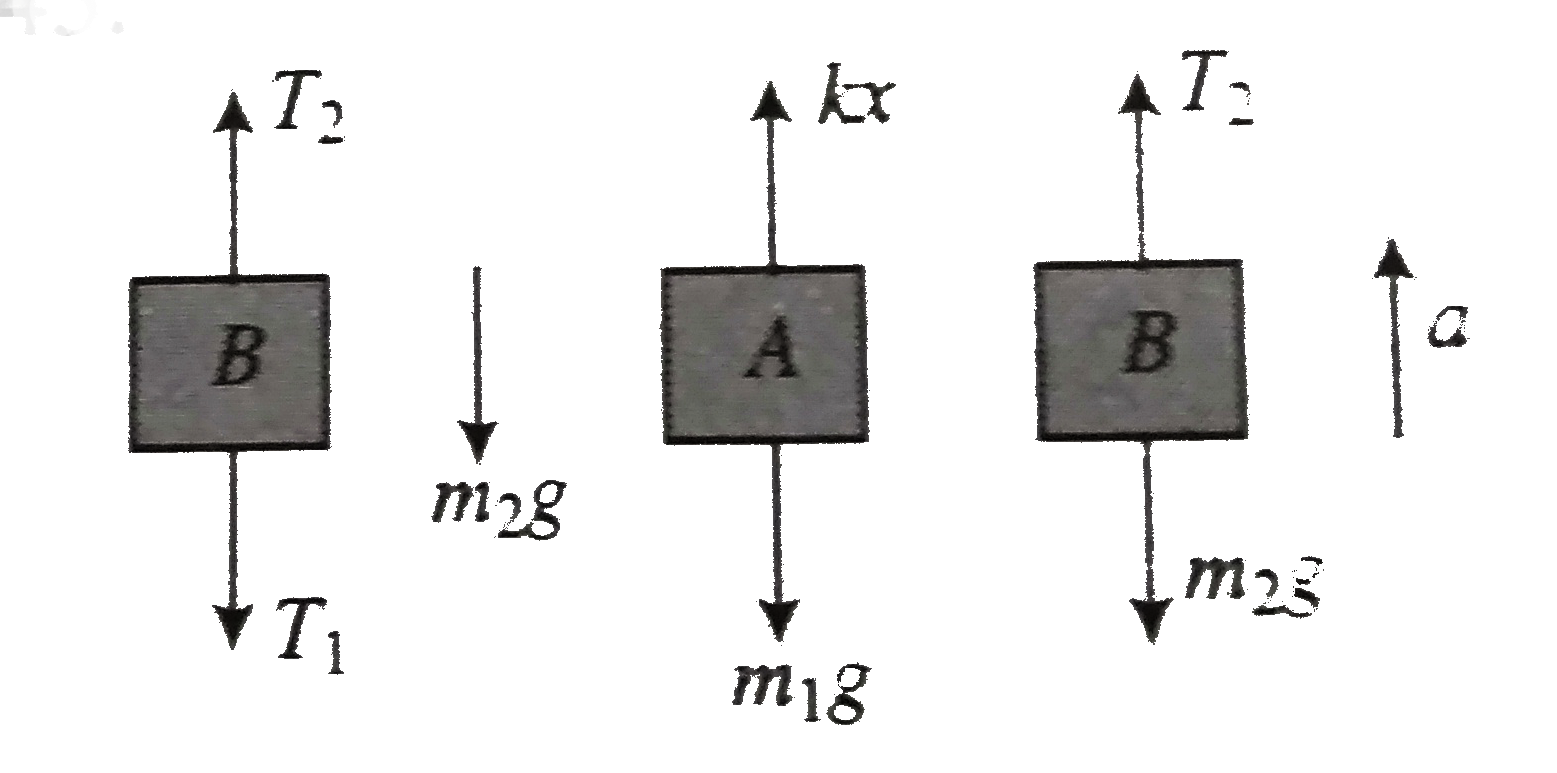
Just after burning the thread, what is the acceleration of m2?View SolutionIn the system shown in fig. m1>m2 . The system is held at rest by thread BC. Now thread BC is burnt. Answer the following:
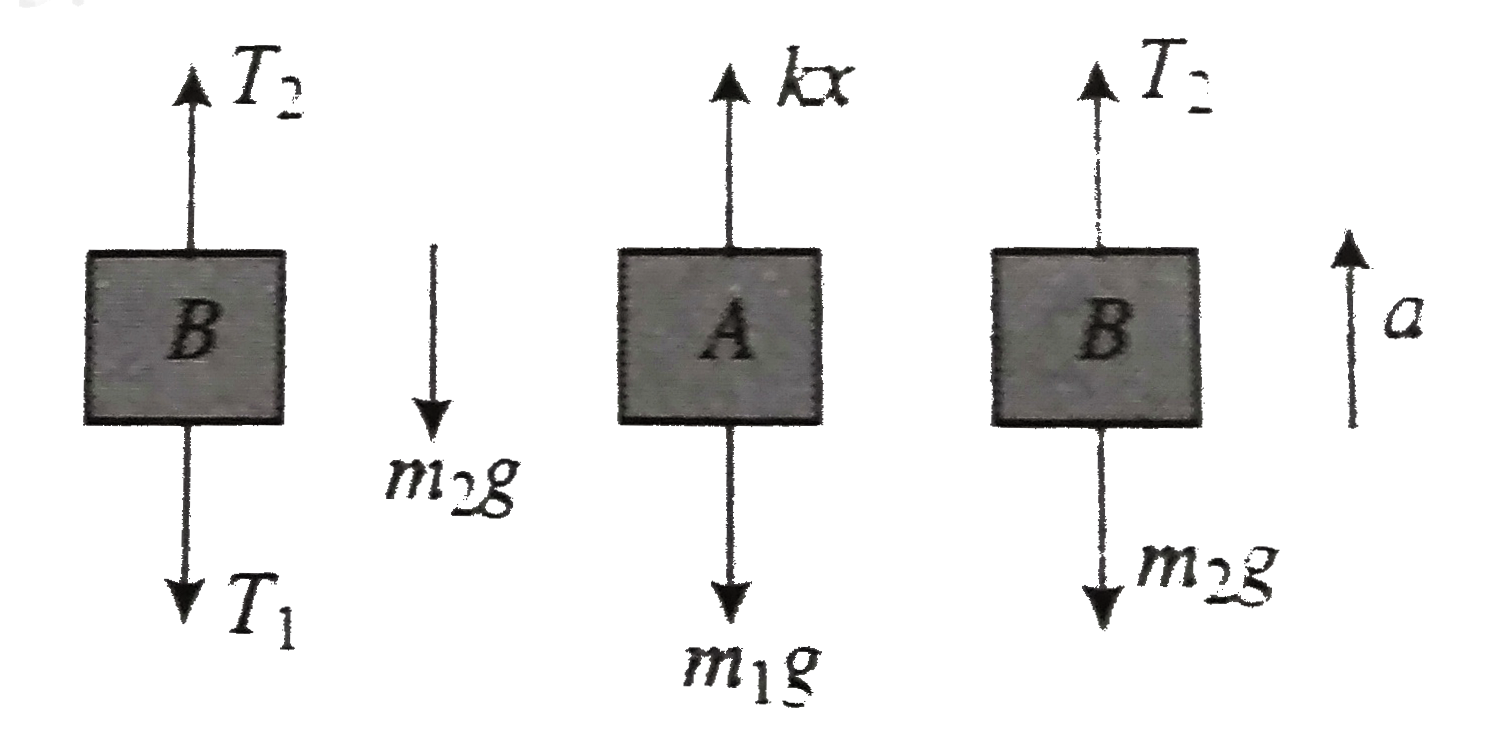
Just after burning the thread, what is the tension in the spring?View SolutionIn the system shown in fig. m1>m2 . The system is held at rest by thread BC. Now thread BC is burnt. Answer the following:

Before burnig the thread, what are the tensions in spring and thread BC, respectively?View SolutionFor the system shown in fog. m1>m2>m3>m4. Initially, the system is at rest in equilibrium condition., if the string joining m4 and ground is cut, then just after the string is cut.
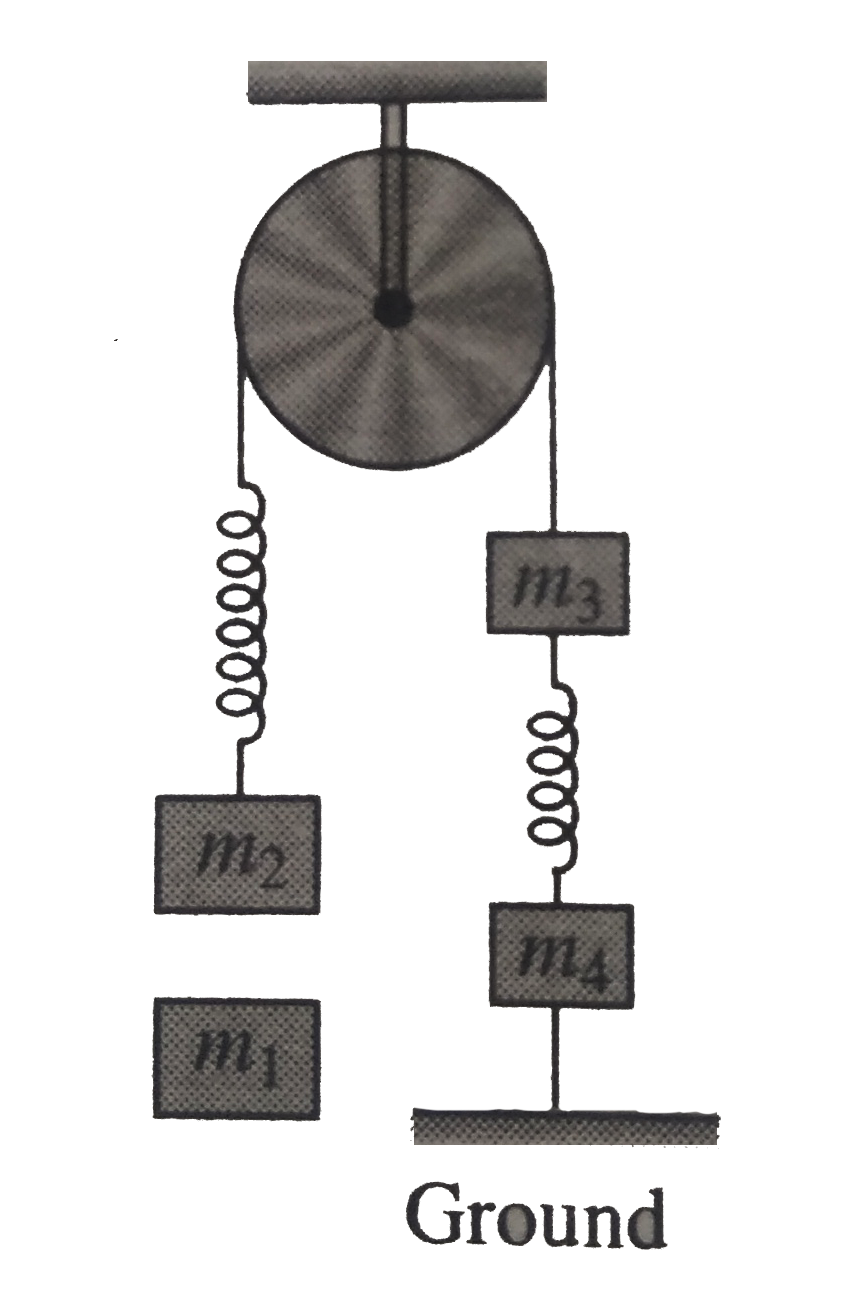
Statement I: m1,m2,m3 remain stationary.
Statement II: The value of acceleration of all the four blocks can be determined.
Statement III: Only m4 remain stationary.
Statement IV: Only m4 accelerates.View SolutionA smooth block of mass m is held stationary on a smooth wedge of mass M and inclination θ as shown in figure .If the system is released from rest , then the normal reaction between the block and the wedge is
 View Solution
View Solution

